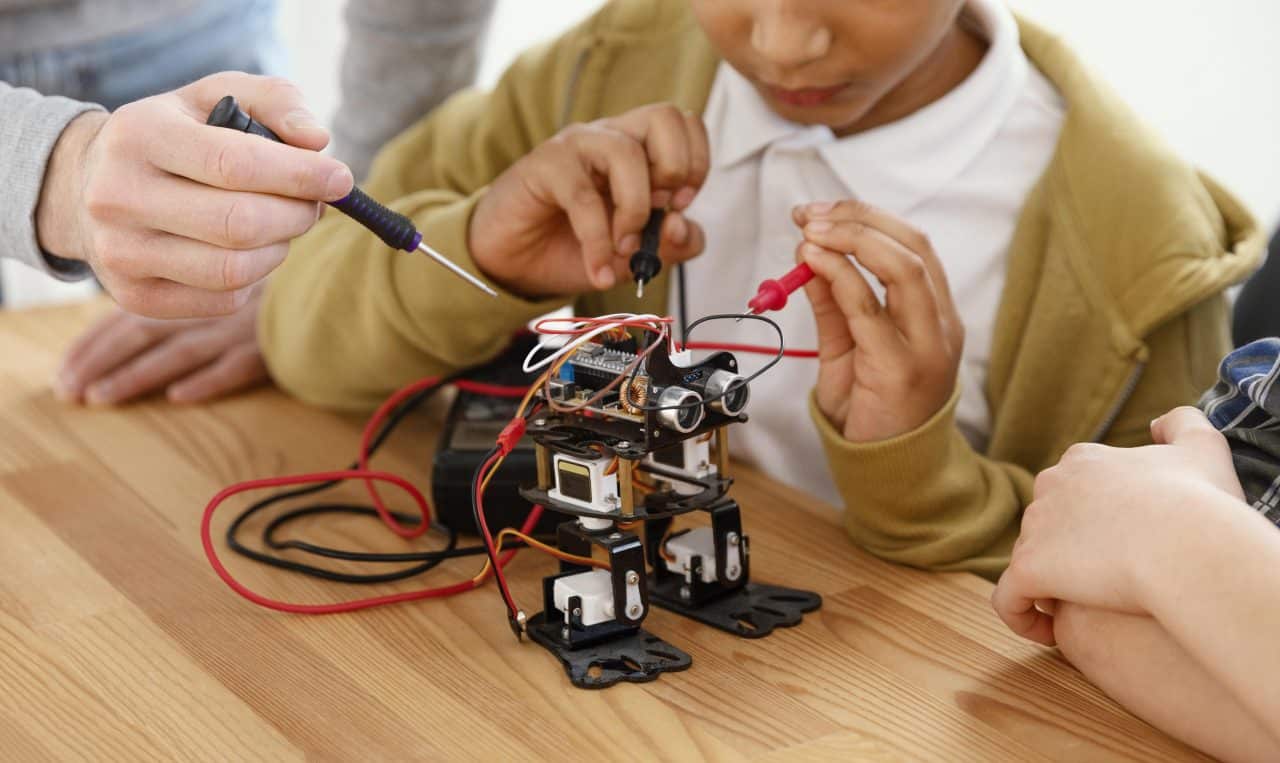7 Reasons Why Kids Should Learn Robotics (2024)

Robotics has emerged as a popular choice among parents who are invested in their children’s learning journey. The rising interest in robotics is backed by extensive research highlighting its numerous benefits for kids. Governments around the world are recognizing the importance of introducing robotics early in the curriculum, reflecting its potential to shape the future workforce. By investing in robotics education for our children, we are not only preparing them for the challenges of tomorrow but also inspiring them to become the innovators, problem solvers, and leaders of the future. Let’s explore seven compelling reasons why kids should embark on the exciting journey of learning robotics in 2024.
Reasons Why Kids Should Learn Robotics (2024)
1. Robotics Sparks Creativity and Curiosity
Traditional programming activities may not always capture the attention of younger children. However, robotics offers a unique blend of creativity and curiosity that can ignite a passion for learning. Through hands-on experimentation and problem-solving challenges, kids are encouraged to think outside the box and explore innovative solutions to real-world problems. Whether it’s building a robot from scratch or programming its movements, robotics provides a creative outlet for young minds to flourish.
2. Robotics Fosters Collaboration and Teamwork
In robotics, collaboration is key to success. Whether working on a group project or participating in a robotics competition, kids learn the importance of teamwork and communication. By collaborating with peers, children gain valuable insights, share ideas, and leverage each other’s strengths to achieve common goals. This collaborative environment fosters a sense of camaraderie and mutual respect, preparing kids for future endeavors that require effective teamwork and cooperation.
3. Robotics Enhances Problem-Solving Skills
At the heart of robotics lies the art of problem-solving. From troubleshooting technical glitches to devising efficient algorithms, kids are constantly faced with challenges that require critical thinking and perseverance. By navigating through obstacles and overcoming setbacks, children develop resilience and learn to approach problems with a solution-oriented mindset. These problem-solving skills are invaluable assets that extend far beyond the realm of robotics, empowering kids to tackle challenges in various aspects of their lives.
4. Robotics Promotes 21st-Century Skills
In an era defined by rapid technological advancements and innovation, 21st-century skills such as critical thinking, creativity, and collaboration are more important than ever. Robotics provides a holistic learning experience that encompasses these essential skills, preparing children for the demands of the modern workforce. Whether it’s designing a robot, programming its movements, or presenting their project to an audience, kids develop a diverse skill set that is transferable to a wide range of professions and industries.
5. Robotics Cultivates Technological Literacy
In today’s digital age, technological literacy is more important than ever. By learning robotics, kids gain hands-on experience with cutting-edge technologies such as sensors, actuators, and microcontrollers. They develop a deeper understanding of how technology works and learn to navigate digital interfaces with confidence. This technological fluency not only prepares children for future careers in STEM fields but also equips them with essential skills for navigating an increasingly technology-driven world.
6. Robotics Encourages Persistence and Resilience
Robotics is not always smooth sailing; it often involves trial and error, setbacks, and unexpected challenges. However, it is through these moments of adversity that children learn the value of persistence and resilience. By persevering through difficulties and iterating on their designs, kids develop a growth mindset and learn to view failure as a stepping stone to success. This resilience serves as a foundation for future endeavors, instilling in children the confidence to tackle new challenges with determination and perseverance.
7. Robotics Sparks Interest in STEM Fields
Perhaps most importantly, robotics has the power to ignite a lifelong passion for STEM fields. By engaging children in hands-on, experiential learning experiences, robotics makes STEM subjects more accessible and enjoyable. It exposes kids to the excitement of scientific discovery, the thrill of technological innovation, and the endless possibilities of engineering creativity. By fostering a love for STEM from a young age, robotics opens doors to future career opportunities and empowers children to pursue their passions in fields that shape the world around us.
Conclusion
As we journey through the digital age, the importance of STEM education and technological literacy cannot be overstated. Robotics serves as a gateway to this exciting world, offering children a platform to explore, create, and innovate. From sparking creativity and curiosity to fostering collaboration and problem-solving skills, robotics provides a rich learning experience that transcends traditional educational boundaries. By investing in robotics education for our children, we are not only preparing them for the challenges of tomorrow but also inspiring them to become the innovators, problem solvers, and leaders of the future. So let’s unlock the potential of our children and embark on a journey of discovery through the captivating world of robotics.
At Leap Robots, we understand the importance of equipping children with the skills they need to succeed in a technology-driven world. That’s why we offer free demo sessions, allowing kids to experience the thrill of robotics firsthand.
Don’t miss out on this opportunity to give your child a head start in robotics education. Sign up for a free demo session today and embark on a journey of discovery with Leap Robots. Together, let’s shape a future where every child has the opportunity to thrive in the world of robotics.

